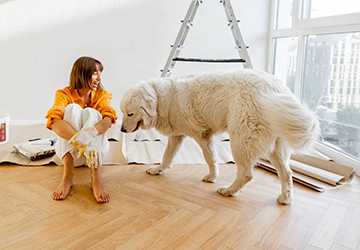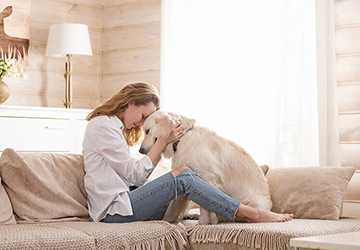How to Help Your Pet Adjust to a New Home
Bringing a new pet into your family will be nice, but it will also be stressful for you and your four-legged friend. Pets, like people, require a certain period to familiarize themselves with all the new things. Whether you have adopted a rescue animal or have welcomed a new puppy or kitten into your home, read on for some tips to help your pet settle into a new home environment smoothly.

Tips on How to Help Your Pet Feel at Home Right Away
Are you concerned that the furball you plan to introduce to the family might get frightened, intimidated and would not adjust well? Well, then follow these simple tips to make their transition into your home more accessible:
1. Create a Safe Space
When bringing your pet home, the first thing to do is ensure they have a safe and comfortable place to go when they get overly excited or stressed. It could be a nook in your living room or a corner in a spare room. Create a space around them filled with things they know and love, like their bed, toys, and blankets. Ensure that it isn't hazardous and place food and water nearby. Such a home will make the pet feel secure while they move to a new place.
2. Stick to a Routine
Pets depend on consistency, thus creating as much structure as possible while moving through the transition period. Feed them at the exact times each day, go for walks or playtime regularly, and make a bedtime routine. Regularity in daily routine will make the new environment a more conducive place for the pet to feel safe and well-adjusted. If you're adopting an older pet, try to learn the routine that it had at its previous home and gradually switch it to yours.
3. Transition to a New Environment Gradually
Every pet owner desires to show their pet every corner of the new house; however, this can be easily overstimulating and lead to anxiety. Instead, start teaching them to explore one room at a time and let them explore the new at their own pace. Supervise and gently encourage their exploration, but don't press them through the barriers. As they get more confident, keep increasing their territory until they get acquainted with the entire house.
4. Supply Many Pats on the Back
During the adaptation period, give your pet all the love, attention, and compliments they deserve when they show good behaviour. Reinforce their positive feelings about their new home with treats, toys, and affection. If your animal is having anxiety problems or other stressful situations, care for them by offering comfort and reassurance without being too much of a burden on them. Positive reinforcement will be instrumental in developing trust and thus strengthening the human-pet bond.
5. Be Patient and Understanding
Adapting to a new place can be a challenging experience for animals; therefore, it is essential to be patient and emphatic. Let them get used to the new environment you provide, and do not expect them to be comfortable immediately. Some pets might finally settle down for up to a week or two.
Therefore, you should remember that some setbacks or even regressions might occur. Stay calm and positive, and always remember that establishing trust and confidence is a process that does not happen overnight.
6. Gradually Introduce Other Pets
If your other pets are in the house, gradually introducing them to the new four-legged friend is essential. Begin by letting them sniff each other through a closed door, and they will be able to get to know each other by scent. Then, when you are ready, start small by introducing them to a controlled setting, such as being on a leash or using a baby gate. Be attentive to how they interact and know how to deal with the possibility of conflicts.
7. Maintain a Calm Environment
Pets are susceptible to their surroundings, so keeping the environment quiet and calm during their adjustment is essential. Avoid loud noises, sudden movements, or any other chaotic activity that could cause your pet to startle or become stressed.

It is crucial to have a comfy atmosphere with soft lighting, peaceful music, and nice bedding. Please note that if you have visitors, ask them to approach your pet gently and not intrude on their privacy. A peaceful atmosphere is essential to make your pet feel more at ease and safe as they become familiar with their new home.
8. Establish Clear Boundaries
Although you may want to cuddle with your new friend, it is essential first to establish the boundaries; this will avoid any confusion and create a sense of structure. Identify with them whether they can go into certain parts of the house, where they can sleep, and which places are forbidden. Provide affirmative encouragement and guide the right direction of undesirable and undesirable behaviours.
Consistency matters the most; hence, every family member must follow the same rules and enforce the boundaries with one voice. When specific rules and regulations are implemented, the pet becomes more confident and less anxious in its new surroundings.
Conclusion
The process of making your pet adapt to a new residence demands that you be patient, consistent, and loving plenty. When you attempt to create a safe space, stick to pets' routines, introduce them to their surroundings slowly, provide positive reinforcement, be patient and understanding, and do many other things, you can help your furry friend feel at home quickly. Remember that every pet has a unique character, so you must be ready to change these tips to meet your pet's specific needs. Over time, and with some patience, your pet will undoubtedly become a family member.